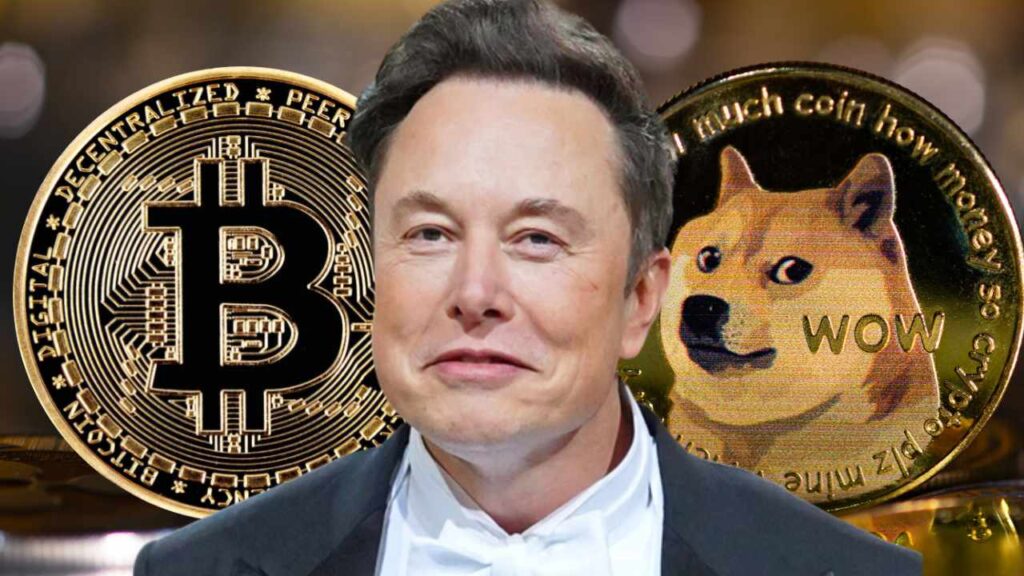Due to its uniqueness and humorous tone, Dogecoin has become a very well-known cryptocurrency. Dogecoin was first developed in 2013 by two software developers as a satire of the cryptocurrency mania. However, it quickly developed a devoted fan base among internet users, and by early 2014, its value had increased to more than $60 million. Dogecoin’s community-driven development has helped it maintain a comparatively consistent value throughout the years, despite the departure of its founders. The idea of meme currencies, the mining process for Dogecoin, its tokenomics, and potential future advancements that might give it a more major role in the cryptocurrency world are all covered in this article. We’ll also talk about the prospect of future Fortune 500 corporations having Dogecoin on their balance sheets.
Dogecoin was initially created as a spoof of the cryptocurrency frenzy, but it quickly became well-liked by internet users. As its value increased, it reached a market capitalization of more over $60 million by the beginning of 2014.
Despite its popularity, Dogecoin’s creators did not have a significant role in its creation. Jackson Palmer quit the project in 2015, while Billy Markus took a less active role. The cryptocurrency was developed by the community and has since been supported by a committed team of volunteers.
Early in 2021, Dogecoin’s popularity soared in part as a result of endorsements from well-known people like Elon Musk and Mark Cuban. At its peak, it had a market capitalization of more than $80 billion. Its value surged.
However, Dogecoin’s value fluctuates a lot, just like many other cryptocurrencies. With a market capitalization of over $11 billion, it is now trading at around $0.08 per coin, after experiencing extreme price fluctuations in recent years.
Dogecoin has grown in popularity despite its volatility, especially among younger investors and internet users. Its appeal is derived from its cheerful and enjoyable character as well as from the community-driven growth.
Tokenomics in Dogecoin are not very complicated. There are currently 130 billion coins in circulation out of a maximum quantity of 129 billion coins. There is no hard cap on the quantity of Dogecoin, in contrast to Bitcoin, which has a set amount of 21 million coins.
With over 5 billion new coins added to the supply each year, Dogecoin’s inflation rate is quite significant. Unless coin demand increases at a similar rate, the value of each coin is expected to diminish over time due to the high rate of inflation.
Dogecoin has maintained a comparatively stable value over the years despite having a high rate of inflation, in part because of its devoted fan base and the community’s capacity to promote adoption and push for new improvements.
It is crucial to comprehend the idea of a meme coin before diving into Dogecoin. A cryptocurrency known as a meme coin is modeled after a well-known internet joke. Meme coins are frequently made for amusement only; they have no real function or purpose beyond being inspired by memes. They are frequently used to mock conventional cryptocurrencies or to test out new blockchain technologies.
One of the most well-known meme currency is Dogecoin, although it is by no means the only one. Shiba Inu (SHIB), which is based on a meme similar to Dogecoin, and PEPE, which has a tokenomics model that encourages users to hang onto their coins, are two more well-known meme coins.
Like the majority of cryptocurrencies, Dogecoin may be mined with computer hardware. In order to validate transactions on the Dogecoin blockchain and solve difficult mathematical problems, the mining process uses specialized software.
The calculations required to verify transactions on the Dogecoin blockchain must be performed by a computer equipped with a graphics processing unit (GPU) or an application-specific integrated circuit (ASIC). Dogecoins that have just been minted are given to miners as compensation.
Dogecoin uses the Scrypt mining algorithm, which is intended to increase its resistance to ASIC mining and encourage the use of GPU mining. This increases mining participation and aids in maintaining the decentralized nature of the Dogecoin network.
However, as Dogecoin gained popularity, the mining process became more difficult, making it difficult for individuals to mine Dogecoins profitably at this point. In order to boost their chances of obtaining Dogecoins, several miners have joined mining pools, which are collections of miners who pool their resources.
Dogecoin’s future is unclear, and it is challenging to forecast its long-term potential. While some detractors claim it is a joke cryptocurrency with no real use, others think it has the potential to be a serious player in the cryptocurrency market. The absence of a distinct use case for Dogecoin is one of its problems. In contrast to other cryptocurrencies like Bitcoin and Ethereum, which have a variety of uses including peer-to-peer transactions and smart contracts, Dogecoin hasn’t yet discovered a useful application outside of its meme-inspired roots.
However, there are potential developments in the future that might increase Dogecoin’s significance in the cryptocurrency industry. One possibility for Dogecoin, for instance, is its usage as a payment method by well-known businesses like Tesla and Twitter. Elon Musk has mentioned working with Dogecoin developers to increase transaction speed in a tweet, which may mean Tesla would accept Dogecoin as payment for its goods. Additionally, Twitter CEO Jack Dorsey has expressed interest in implementing micropayments on the platform using cryptocurrencies like Dogecoin.
The use of cutting-edge technologies like smart contracts is another potential future improvement for Dogecoin. Although Dogecoin was first developed as a joke, its popularity has increased to the point where it may now be used for more serious purposes than just meme-inspired applications.
In conclusion, Dogecoin has emerged as a distinctive and well-liked cryptocurrency, attracting a devoted fan base thanks to its amusing and cheerful nature. Although its value is highly erratic, its community-driven growth and devoted following have helped it maintain a roughly constant value over time. The incorporation of emerging technologies like smart contracts and its usage as a payment method by major businesses could give Dogecoin a more substantial position in the cryptocurrency industry, despite the fact that it currently lacks a clear use case beyond its meme-inspired roots.
In the future, it’s likely that Fortune 500 firms will have Dogecoin listed on their balance sheets as interest in cryptocurrencies increases. Only time will tell what Dogecoin’s future contains, but it is obvious that it has already had a big impact on the cryptocurrency industry and may have a bigger impact in the future.






